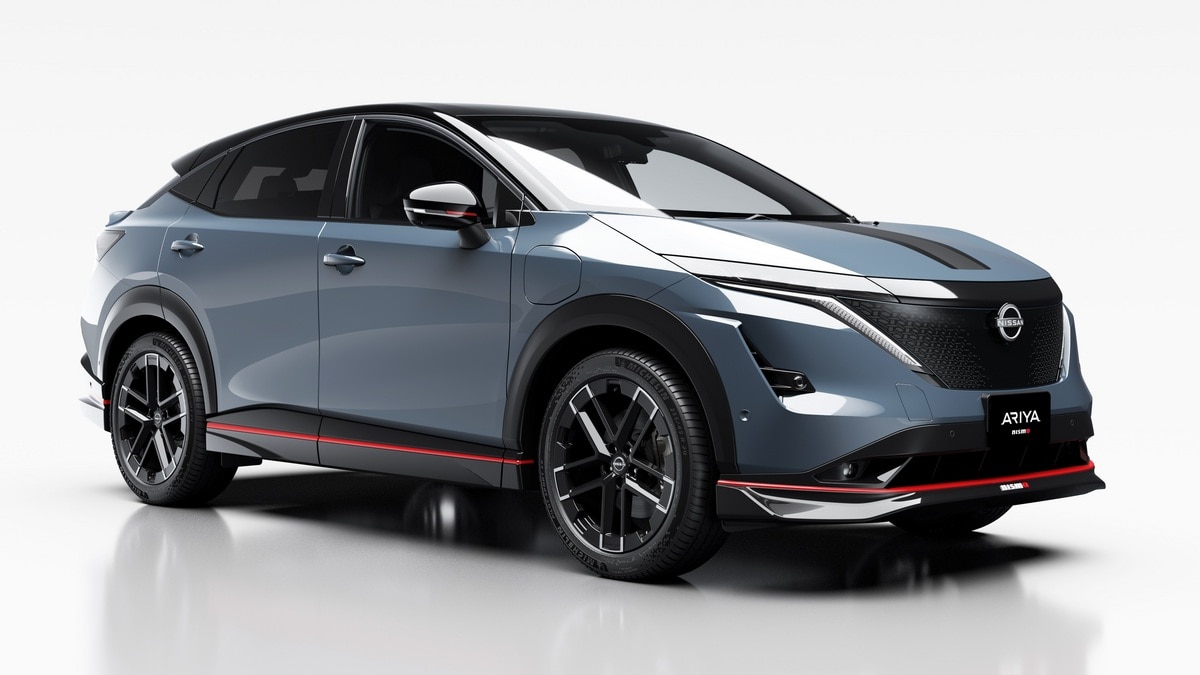Along with high-voltage battery packs that give power to electric vehicles’ motors, every EV also has a 12-volt battery to keep the electrical system and accessories such as lights and power door locks operational when the car is powered down — just like a gas-powered car.
And, as with the battery for an internal combustion engine vehicle, an electric car’s 12-volt battery can become discharged and prevent the car from starting. While the task is inconvenient no matter what type of vehicle you drive, jump-starting an electric car with a drained battery is possible.
Continue reading to learn how to jump-start an electric car with a dead battery.
MORE: Which Is Better To Buy: Fully Electric Car or Hybrid?
Why Did My Battery Discharge?
A dead 12-volt battery in an electric vehicle can happen for many reasons, including sitting unused for an extended period or a fault in the car’s charging circuit. No matter the reason for the low charge, the 12-volt battery must have enough power to start the car’s electrical system.
The 12-volt battery in an EV usually charges at the same time the car is charged and also through the electrical current that is transferred from the high-voltage battery when not connected to a charging station.
If the 12-volt battery in your EV has lost its charge, you can use jumper cables to try to start the vehicle.
Never attempt to jump the high-voltage lithium-ion batteries in electric vehicles.
RELATED: Everything That Drains Your Electric Car Battery
Jump-Starting an Electric Vehicle
The other vehicle being used to assist in starting your electric vehicle must have a 12-volt battery with a negative ground system. This is typical with gas-powered cars.
Never use an electric vehicle to jump-start another 12-volt battery. The EV’s 12-volt charging points are for jump-starting the car itself and not for assisting another vehicle with a jump-start.
These instructions for jump-starting an electric vehicle are general guidelines and typical for most models. Refer to your owner’s manual for the location of the car’s 12-volt battery charging points and the exact procedure for your vehicle. Wear gloves and eye protection when connecting and disconnecting jumper cables.
Steps to Jump-Starting an Electric Car
- Position the cars. Place the car with a good battery near the EV needing the boost so the jumper cables can easily reach both 12-volt batteries.
- Engage the brake. Shift into park and put on the parking brake.
- Switch off everything. Check and make sure you turn off the lights and accessories in both vehicles.
- Connect positive clamps. Now you’re ready to connect one end of the red positive (+) cable to the discharged battery’s positive (+) terminal. Then, attach the other end of the positive (+) jumper cable to the positive (+) terminal of the booster vehicle battery.
- Attach negative clamps. Next, place one end of the black negative (–) cable to the good battery’s negative (–) terminal. Now, connect to the negative (-) grounding point for the discharged battery. That’s the bolt found in engine bays that’s marked with the a (-). You can look for a bolt or bracket, although most models have a grounding bolt marked with a (–) placed solely for this purpose.
- Check. Ensure that the booster cables are away from any moving parts and that the clamps have good metal-to-metal contact with the battery terminals and charging points.
- Start the donation vehicle. Sit in the vehicle with a good battery and start the engine.
- Get the EV started. Finally, try to start the EV with the dead battery.
TIP: If available, a portable jump-start device may be used to jump-start an EV instead of a donor vehicle.
Jumper Cable Removal
Keep the jump-started electric vehicle running for several minutes while connected to the booster vehicle. Then, disconnect the cables.
Reverse the sequence exactly when removing the clamps of the jumper cables. If the cables are connected or removed in the wrong order, an electrical short may occur and cause damage to the vehicle. Always connect and remove the jumper cables in the correct order and ensure that the clamps do not touch each other or metal surfaces.
After jump-starting your EV, keep it running for at least 20 minutes to help ensure the car’s electrical system charges the dead battery.
To help avoid further inconvenience caused by a dead electric vehicle battery, have the 12-volt battery tested at your dealership or qualified car maintenance and repair professional.
RELATED: Where Will EV Batteries Go When We’re Done with Them?
Jump-Starting Safety Tips
Always keep safety in mind when performing automobile maintenance. When jump-starting your EV, remember:
- Steer clear of the high-voltage battery. The high-voltage battery that powers the EV’s motor cannot be jump-started using another vehicle or portable jump-starting equipment. Personal injury, death, or damage to the vehicle could result.
- Handle with care. Batteries can hurt you. They can be dangerous because they contain acid that can burn you and contain gas that can explode or ignite.
- Wear protection. Eye protection and gloves can help prevent injury from jump-starting an electric vehicle. Wash your hands after handling booster cables and car batteries.
- Remove charger plug. Do not attempt to jump-start the 12-volt battery while the lithium-ion battery is being charged. Doing so can damage the car, the equipment, and you.





